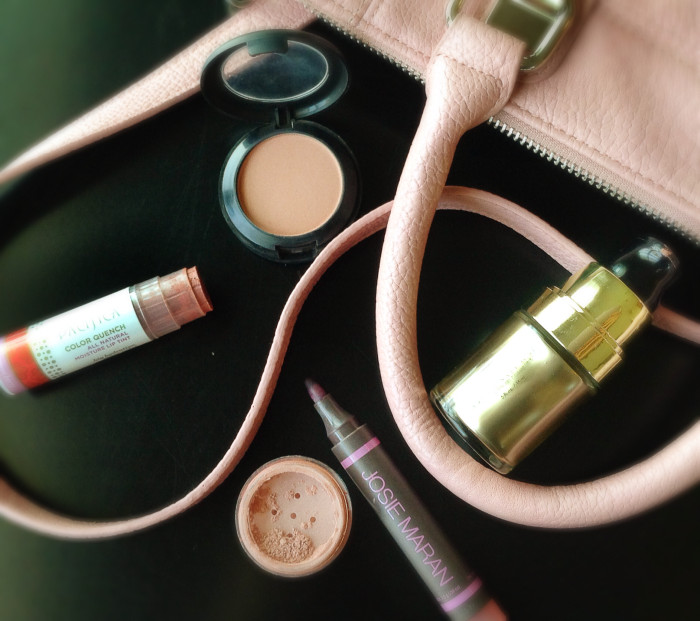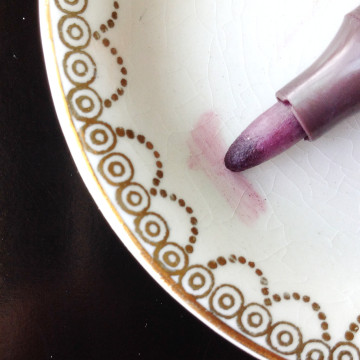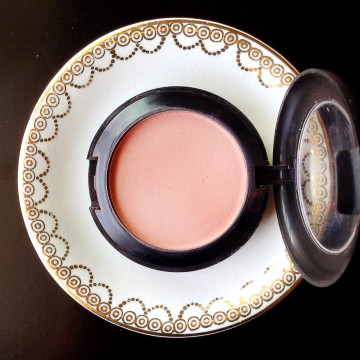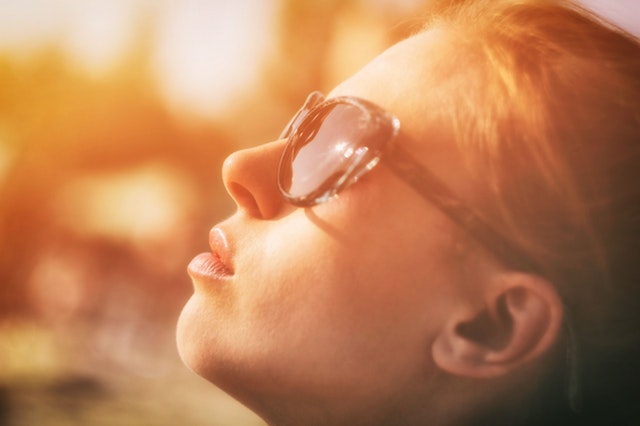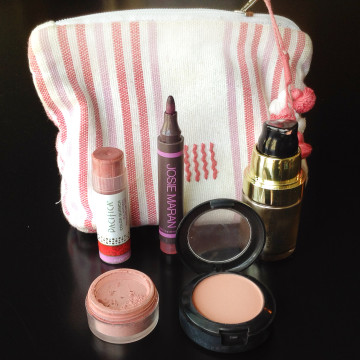
Rouge comes in all different shades and formulas, but never fear – we’ll walk you through the blush basics.
Every makeup-lover probably has a first makeup love. For some it’s mascara, for others its a shimmery gloss. When we were growing up, my best friend never went without her Bourjois bronzer. Me–I loved blush, a peach powder formula to be specific. I quickly learned that blush can transform the face–and if used properly, people may just ask you who’s the new love in your life (and they won’t mean your makeup!).
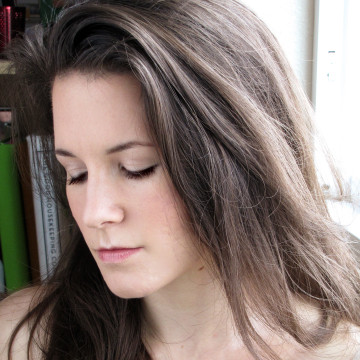
Paradoxically, for maximum impact, blush needs to be a diffuse, subtle glow. Think of how you look after coming in from a chilly day–minus the pink nose.
Tips for Getting Started:
-Always begin with a clean face (+ foundation, that is)–no matter what formula of blush you use, it won’t blend very well if your face is varying degrees of oily and un-exfoliated. I don’t use primer very often, but a light layer of mineral powder serves as a good base for powder formulas, while a BB cream or tinted moisturizer works well with liquid/gel/cream formulas. (More on formulas below).
-Applying blush without a base will accentuate blemishes and uneven tone.
-Less is more: it’s much easier to apply a touch of blush and build up the color rather than apply too much at once and undo the damage. Blush should be the accent, not the focus.
-That being said, if you have a heavy hand, you can improve the situation by applying a layer of foundation over the blush to soften its intensity.
-Use a separate brush or sponge for blush. Reusing your blusher blush with, say, translucent powder will not end well.
-I find that it helps to always wear a healthy coat of mascara with blush–even if you wear no other pigmented makeup!–since dark, thick lashes help balance your flush. Wearing blush without enhancing your eyes may give you a feverish look.
-Pro-tip: apply blush after you’ve applied your eyes and lips–when your face isn’t naked, you’ll find that you don’t need very much blush at all.
-Say “no” to stripes: Begin at the apples of your cheeks and apply in generous, circular stokes away from the center of your face. Avoid going as far back as your hair-line, and blend well.
For contouring purposes, keep blush mostly along your cheekbones and avoid spreading the blush to the hollows of your cheeks.
Choosing a Shade Right for Your Complexion:
-For fair skin: light pink, pale peach, very fair gold
-For medium to dark skin: pink may be more difficult to pull off but peach is universally flattering. Berry shades offer a dramatic flair.
-For dark skin: experiment with deep red tones.
-Color correction: if your skin is naturally too pink/red, stick with a muted apricot or bronze.
-If you’re just getting started with makeup, you can quickly find a flattering shade by lightly pinching your cheeks and finding a blush close to your natural flush.
-Experiment. You may find that you’re able to pull off cooler shades (like berry) and warmer tones (like apricot). In my experience, blush looks best when it echoes the level of warmth in the rest of your makeup. I learned the hard way that peach blush (warm) doesn’t look that great with plum eyeshadow (cool).
Different Formulas & How to Apply Them:
Pro tip: If you have oily skin, or if you sweat throughout the day, powdered blush formula may darken on skin. You may want to use a liquid or cream formula or switch to a lighter powder.
-If you’re going for a dewy, youthful look, try a gel or cream blush. This formula works well for daytime looks and may work best with oilier skin (for the reason cited above–plus, stains can cling to flaky skin and make it more obvious). Apply cream blush using a sponge or your fingers. It tends to have a very strong pigment, so use sparingly. While gel stains appear to have a very intense pigment, they’re usually more subtle once they’re on your skin. Apply three dots to each cheek and blend quickly (it dries fast!). Finally, be careful not to apply liquid formula over powder–this has the same effect of apply them to ultra-dry skin.

Lip Quench by Pacifica Perfume in “Guava Berry” – tinted lip balm can make an excellent, dewy blush if you’re in a pinch.
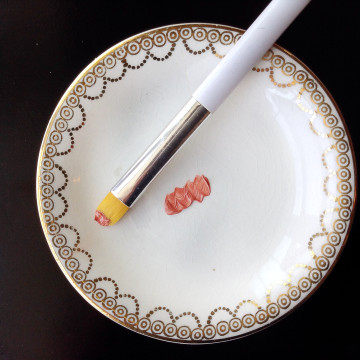
Cream Blush by Glamnatural in “Sun Kissed.”
-If you’d like a more traditional, matte look, use a medium-sized brush to apply a powder formula. If you’re using a pressed powder, use a fluffy brush, tap off excess powder, and lightly swirl onto cheeks. A little bit goes a long way. If you’re using a loose, mineral powder, apply with a medium-sized kabuki brush. Pour a small amount of powder into the lid of the blush container. Swirl your kabuki brush in the powder, making sure it’s evenly coated, and tap off excess. Buff onto skin with circular motions–and always use a light touch!
-Many powder blushes also have a touch of shimmer (see “Leigh” by Alima Pure below.) This is a good compromise between a dewy liquid formula and a matte powder formula.
-For an extra-long lasting application, apply powder blush over a cream blush.
Pressed Blush by Ofra in “Charm.”
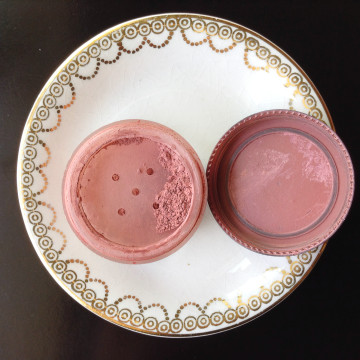
Luminous Shimmer Blush – loose mineral powder blush by Alima Pure in “Leigh.”
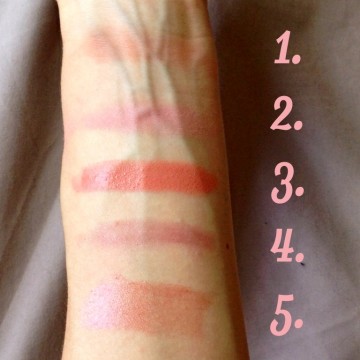
These swatches show the texture of the different formulas in natural light. (Obviously, you would not apply them this intensely to your face!) 1. Ofra pressed blush. 2. Alima Pure loose mineral blush. 3. Glamnatural cream blush. 4. Josie Maran lip and cheek stain. 5. Pacifica tinted balm.
Finally, keep in mind that you may need to vary the color as texture of your blush as the seasons change. The coming summer months may call for dewy, radiant hues. (Liquid formulas also look more natural in outdoor lighting.)
More in Beauty Secrets: Books for Beauty!
Also see: Natural Beauty: Finding Natural Hair Dye
__
Photos: Mary Hood

